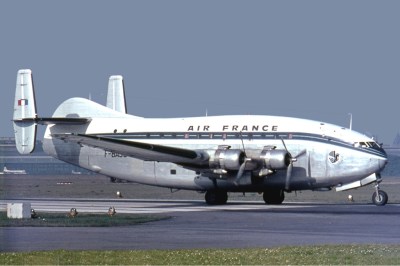Eleven years ago, the Airbus A380 entered commercial service with Singapore Airlines. In the time since then it has become the queen of the skies. It’s a double-decker airliner, capable of flying 550 passengers eight thousand nautical miles. Some configurations of the A380 included private suites. Some had a shower. This is the epitome of luxury, a dream of flying with long-stemmed glasses, a movie, and a pleasant dream in mid-air.
Now, after the cancellation of A380 orders by Emirates, Airbus has announced it will end production of this massive, massive plane. No, it’s not the last flight of the Concorde, but it is the beginning of the end of an era. The biggest and most impressive planes just aren’t economical; it’s possible to fly three 787s across the globe for a single flight of an A380. The skies won’t fall silent, but soon the A380 will be no more.
The First Double-Decker (Air)bus?
While the A380 gets credit for being a massive, mindbendingly-large flying chunk of aluminum, the public clearly knows it for being the biggest, double-decker jet. If you fly the right airline and pay a fortune, you can get a private cabin and take a shower. You may have seen television commercials touting this level of pampering, but historically planes were even more luxurious.
Although it never made it off the drawing board, the McDonnell Douglas MD-12 would have looked extremely similar to the A380, and would beat the A380 into the air by a decade. The MD-12 would be longer, but have a shorter wingspan. The range of the MD-12 would be about 800 nautical miles (nmi) less than the A380, but the MD-12 did have one advantage over the A380: it would be able to fit into any airport that could service a Boeing 747. This wasn’t true for the A380 — because of the A380s enormous wingspan, it could only fly to destinations that had upgraded gates. This is one small, but significant, reason why the A380 wasn’t adopted by more operators.
Other passenger jet planes have used two decks. The 747 and its graceful hump immediately comes to mind, but there are more: the Lockheed L-1011 TriStar had the option for a lounge in the cargo compartment, accessible from the main deck through an elevator. It is truly a shame a panoramic window in an airliner is a very, very difficult engineering problem to solve. Other jet aircraft also have some living area tucked into spaces away from the masses. The 777 can have crew rest quarters in a small ‘upper deck’. Most widebody airliners have some provisions for a crew rest area in either the lower deck or tucked above the cabin.
Before the age of jetliners, a double deck airplane was almost the norm. The Boeing 314 Clipper, the plane that accidentally circumnavigated the globe had two decks. The Dornier Do X wasn’t so much an airplane, but a flying ship with two decks. The …read more
Source:: Hackaday

